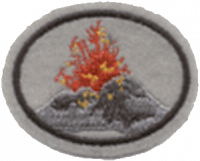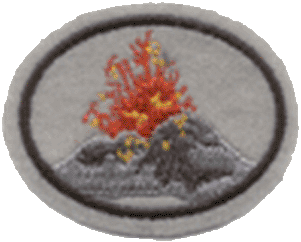Difference between revisions of "AY Honors/Volcanoes/Answer Key/es"
From Pathfinder Wiki
(Created page with "</noinclude> <!-- 3. Identificar y marcar las siguientes partes de un volcán en una hoja de trabajo o en su propio dibujo: -->") |
(Updating to match new version of source page) |
||
| (3 intermediate revisions by one other user not shown) | |||
| Line 1: | Line 1: | ||
{{HonorSubpage}} | {{HonorSubpage}} | ||
| − | <section begin="Body" /> | + | <section begin="Body" /> |
{{ansreq|page={{#titleparts:{{PAGENAME}}|2|1}}|num=1}} | {{ansreq|page={{#titleparts:{{PAGENAME}}|2|1}}|num=1}} | ||
<noinclude></noinclude> | <noinclude></noinclude> | ||
| Line 211: | Line 211: | ||
{{CloseReq}} <!-- 7 --> | {{CloseReq}} <!-- 7 --> | ||
{{ansreq|page={{#titleparts:{{PAGENAME}}|2|1}}|num=8}} | {{ansreq|page={{#titleparts:{{PAGENAME}}|2|1}}|num=8}} | ||
| − | <noinclude> | + | <noinclude></noinclude> |
| − | </noinclude> | + | <!-- 8. ¿Qué es el Cinturón de Fuego del Pacífico y dónde se encuentra? --> |
| − | <!-- 8. | ||
| − | |||
| − | |||
| − | |||
| − | |||
| − | |||
| − | |||
<noinclude></noinclude> | <noinclude></noinclude> | ||
{{CloseReq}} <!-- 8 --> | {{CloseReq}} <!-- 8 --> | ||
{{ansreq|page={{#titleparts:{{PAGENAME}}|2|1}}|num=9}} | {{ansreq|page={{#titleparts:{{PAGENAME}}|2|1}}|num=9}} | ||
| − | <noinclude> | + | <noinclude></noinclude> |
| − | </noinclude> | + | <!-- 9. Describir como las islas hawaianas todavía están siendo formadas. --> |
| − | <!-- 9. | ||
| − | |||
| − | |||
<noinclude></noinclude> | <noinclude></noinclude> | ||
{{CloseReq}} <!-- 9 --> | {{CloseReq}} <!-- 9 --> | ||
{{ansreq|page={{#titleparts:{{PAGENAME}}|2|1}}|num=10}} | {{ansreq|page={{#titleparts:{{PAGENAME}}|2|1}}|num=10}} | ||
| − | <noinclude> | + | <noinclude></noinclude> |
| − | </noinclude> | + | <!-- 10. Hacer una investigación de la erupción del Monte Santa Helena o algún otro volcán de su elección. Escribir un informe de una página sobre la información encontrada. --> |
| − | <!-- 10. | ||
| − | |||
| − | |||
{{clear}} | {{clear}} | ||
| Line 245: | Line 232: | ||
{{clear}} | {{clear}} | ||
| − | + | {{clear}} | |
| − | |||
| − | |||
| − | |||
| − | |||
| − | |||
| − | |||
| − | |||
| − | |||
| − | |||
| − | |||
<noinclude></noinclude> | <noinclude></noinclude> | ||
{{CloseReq}} <!-- 10 --> | {{CloseReq}} <!-- 10 --> | ||
{{ansreq|page={{#titleparts:{{PAGENAME}}|2|1}}|num=11}} | {{ansreq|page={{#titleparts:{{PAGENAME}}|2|1}}|num=11}} | ||
| − | <noinclude> | + | <noinclude></noinclude> |
| − | </noinclude> | + | <!-- 11. Encontrar un versículo en la Biblia que habla de los volcanes. --> |
| − | <!-- 11. | ||
| − | |||
| − | |||
| − | |||
| − | |||
| − | |||
| − | |||
| − | |||
| − | |||
| − | |||
{{clear}} | {{clear}} | ||
| Line 280: | Line 247: | ||
{{CloseReq}} <!-- 11 --> | {{CloseReq}} <!-- 11 --> | ||
{{ansreq|page={{#titleparts:{{PAGENAME}}|2|1}}|num=12}} | {{ansreq|page={{#titleparts:{{PAGENAME}}|2|1}}|num=12}} | ||
| − | <noinclude> | + | <noinclude></noinclude> |
| − | </noinclude> | + | <!-- 12. Hacer un modelo tridimensional de un volcán. --> |
| − | <!-- 12. | ||
| − | |||
| − | |||
| − | + | {{clear}} | |
| − | |||
| − | |||
<noinclude></noinclude> | <noinclude></noinclude> | ||
| Line 294: | Line 256: | ||
<noinclude></noinclude> | <noinclude></noinclude> | ||
==Referencias== | ==Referencias== | ||
| − | {{: | + | <noinclude></noinclude> |
| − | [[Category: | + | |
| + | {{:AY Honors/Regional/flpatchnote{{GetLangSuffix}}}} | ||
| + | [[Category:AY Honors/noindex{{GetLangSuffix}}|{{SUBPAGENAME}}]] | ||
| + | |||
<section end="Body" /> | <section end="Body" /> | ||
| − | |||
{{CloseHonorPage}} | {{CloseHonorPage}} | ||
Latest revision as of 15:05, 2 January 2023
1
¿Qué es vulcanología y qué hace un vulcanólogo?
2
Describir las cinco tipos de volcanes.
2a
Estratovolcán
2b
Cono de escoria
2c
Escudo
2d
Caldera
2e
Fisura
3
Identificar y marcar las siguientes partes de un volcán en una hoja de trabajo o en su propio dibujo:
3a
Cráter
3b
Cima
3c
Base
3d
Tubo
3e
Díque
3f
Garganta
3g
Fumarola
3h
Embalse de magma
4
Describir las diferentes clases de lava y dibujar una imagen para cada una:
4a
Pāhoehoe (cordada)
4b
'A'ā (escoriácea)
4c
Coladas en bloques
4d
Almohadillada
5
Definir los siguientes términos:
5a
Materiales piroclásticos
i
Bombas volcánicas
ii
Ceniza
iii
Lapilli
iv
Pómez
5b
Flujo piroclástico
5c
Lahar
5d
Magma
5e
Plutón
5f
Punto caliente
6
Explicar cómo un volcán entra en erupción.
7
Definir los cuatro niveles de actividad de los volcanes:
7a
Activo
7b
Intermitente
7c
Dormido
7d
Extinto
8
¿Qué es el Cinturón de Fuego del Pacífico y dónde se encuentra?
9
Describir como las islas hawaianas todavía están siendo formadas.
10
Hacer una investigación de la erupción del Monte Santa Helena o algún otro volcán de su elección. Escribir un informe de una página sobre la información encontrada.
11
Encontrar un versículo en la Biblia que habla de los volcanes.
12
Hacer un modelo tridimensional de un volcán.
Referencias
Nota importante del parche
Esta especialidad es una especialidad regional aprobada por la Asociación de Florida. Para obtener el parche de esta especialidad, hay que contactar a la Asociación de Florida por medio de su página web.



